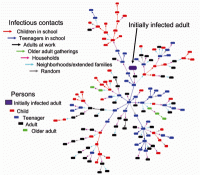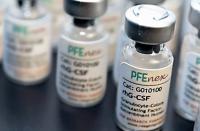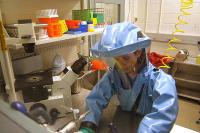-
Can America cope with a resurgence of tropical disease?
Having stamped out a number of tropical diseases — including malaria — decades ago, is America today complacent about a rising wave of infectious disease? It is the nature of these diseases — neglected diseases, diseases of poverty, call them what you like — that they can go unnoticed for years, chewing away at the health of individuals and communities. As poverty, geography, climate, and social factors combine to bring tropical diseases out of hiding once again in the U.S. South, physicians, politicians, and the general public have to take the warning signs seriously and recognize that the tools available for tackling tropical diseases are sorely lacking. Despite tremendous advances in other types of illness in recent decades, tropical medicine remains stubbornly stuck in the 1950s, leaving the United States as unprepared as low-income nations to treat any significant number of cases. With diseases like Chagas now known to be prevalent and transmissible within the United States, better awareness, better tests, and better treatments are all urgently required. Otherwise, the number of people affected and infected will only continue to rise as this perfect storm grows ever stronger.
-
-
The history of biological weapons use
Few comprehensive, definitive histories of biological warfare have been written, many events reported in the literature never happened, and few details are available about some uses of biological weapons which most certainly did occur. A new review of the literature on actual and alleged instances of biological warfare finds that the incidence of illicit biological agent use has been greater than many people may realize, even as the effects have been relatively limited.
-
-
New research aims to slow the spread of infectious diseases

Emerging pandemic disease outbreaks such as Ebola increasingly threaten global public health and world economies, scientists say. We can expect five such new diseases to emerge each year — and spread. The tropical disease dengue fever, for example, has made its way to Florida and Texas, seemingly to stay. The NSF’s Ecology and Evolution of Infectious Diseases (EEID) program supports research aiming to help understanding of the underlying ecological and biological mechanisms behind human-induced environmental changes and the emergence and transmission of infectious diseases. This year, the program has awarded eight new grants totaling $18 million.
-
-
New book details safety, security methods for biosciences sites
Recent mishaps at laboratories which mishandled potentially dangerous biological substances and the transmission of the Ebola virus in a U.S. hospital are symptoms at bioscience facilities that two Sandia National Laboratories researchers think could be prevented by implementing the practices in a new book on biorisk management. The new book, Laboratory Biorisk Management: Biosafety and Biosecurity, is the first full-length manuscript on the detailed implementation of biorisk management.
-
-
Repurposing wasted food would feed the hungry, create jobs
Roughly one third of all global food gets wasted. In the United States, that number is even higher, with nearly 40 percent of all food going to waste, making it one of the most wasteful countries in the world. Researchers have developed a new model for recovering would-be wasted — or surplus — food and repurposing it to feed hungry people, generate revenue, and even create jobs. The model — Food System-Sensitive Methodology (FSSM) — was recently piloted in West Philadelphia. The researchers say that applying FSSM nationally would likely yield about 1.1 billion pounds of recovered wasted food annually.
-
-
EU-funded research: Climate change and food safety
The global fresh produce supply chain must take into account climate change in order to ensure food safety, warn EU-funded researchers. This was the key recommendation of the EU-funded VEG-I-TRADE project, which was launched in 2010 to assess the safety of fresh produce in a rapidly evolving context of climate change and expanding international trade.
-
-
Long-distance travelers may contribute to the spread of antibiotic resistance
Swedish exchange students who studied in India and in central Africa returned from their sojourns with an increased diversity of antibiotic resistance genes in their gut microbiomes. These resistance genes were not particularly abundant in the students prior to their travels, but the increases are nonetheless quite significant. The researchers questioned the conventional wisdom that overuse of antibiotics was entirely responsible for the surge in resistance, despite the fact that overuse is a huge problem.
-
-
New drug protects against nuclear radiation’s deadly effects 24 hours after exposure
The threat of a nuclear incident, with the potential to kill or injure thousands of people, has raised global awareness about the need for medical countermeasures that can prevent radiation-induced bodily damage and keep people alive, even if given a day or more after contact with nuclear radiation. An interdisciplinary research team reports a breakthrough in countering the deadly effects of radiation exposure. A single injection of a regenerative peptide was shown significantly to increase survival in mice when given twenty-four hours after nuclear radiation exposure.
-
-
Mobile phone data help track spread of infectious diseases
Tracking mobile phone data is often associated with privacy issues, but these vast datasets could be the key to understanding how infectious diseases are spread seasonally, according to a new study. Researchers used anonymous mobile phone records for more than fifteen million people to track the spread of rubella in Kenya and were able quantitatively to show for the first time that mobile phone data can predict seasonal disease patterns. Harnessing cellphone data in this way could help policymakers guide and evaluate health interventions like the timing of vaccinations and school closings, the researchers said. The researchers’ methodology also could apply to a number of seasonally transmitted diseases such as the flu and measles.
-
-
Toxic chemical found in fish-eating in birds outside of a Georgia’s Superfund site
Researchers have found that a contaminated mixture called Aroclor 1268 has spread beyond a former chemical plant, now a Superfund site, near Brunswick, Georgia. Aroclor 1268 is composed of a suite of toxic chemical compounds known as polychlorinated biphenyls, or PCBs. The chemical was used to produce insulation materials at the Linden Chemical Plant at the Turtle Estuary near Brunswick until 1994.
-
-
Two major U.S. aquifers contaminated with high levels of natural uranium
Nearly two million people throughout the Great Plains and California live above aquifer sites contaminated with natural uranium which is mobilized by human-contributed nitrate. Data from roughly 275,000 groundwater samples in the High Plains and Central Valley aquifers show that many Americans live less than two-thirds of a mile from wells that often far exceed the uranium guideline set by the Environmental Protection Agency. A new study reports that 78 percent of the uranium-contaminated sites were linked to the presence of nitrate, a common groundwater contaminant that originates mainly from chemical fertilizers and animal waste.
-
-
Pfenex awarded contract valued at up to $143.5 million to develop anthrax vaccine

San Diego, California-based Pfenex Inc. the other day announced it has signed a five year, cost plus fixed fee contract valued at up to $143.5 million with the Biomedical Advanced Research and Development Authority (BARDA) of the Department of Health and Human Services (HHS), for the advanced development of Px563L, a mutant recombinant protective antigen anthrax vaccine. The company says the U.S. government is looking to have a stockpile of seventy-five million doses.
-
-
What if it happened again? What we need to do to prepare for a nuclear event
As we observe the 70th anniversary of the bombings of Hiroshima and Nagasaki, it may seem like the threat from nuclear weapons has receded. But it hasn’t; the threat is actually increasing steadily. This is difficult to face for many people, and this denial also means that we are not very well-prepared for nuclear and radiological events. Any nuclear weapon exchange or major nuclear plant meltdown will immediately lead to a global public health emergency. The Ebola outbreak taught the world that we should have resources in place to handle a major health emergency before it happens. What would a Nuclear Global Health Workforce need to be prepared to manage? For that we can look back at the legacy of the atomic bombings of Hiroshima and Nagasaki, as well as the nuclear accidents like Chernobyl and Fukushima.
-
-
Warming-driven substantial glacier ice loss in Central Asia imperils water supplies

Central Asia is the outstanding case for human dependence on water seasonally delayed by glaciers. Nowhere the question about the glacier state is linked so closely to questions of water availability and, thus, food security. The glaciers in Central Asia, however, experience substantial losses in glacier mass and area. Along the Tien Shan, Central Asia’s largest mountain range, glaciers have lost 27 percent of their mass and 18 percent of their area during the last fifty years. Scientists estimate that almost 3,000 square kilometers of glaciers and an average of 5.4 gigatons of ice per year have been lost since the 1960s, saying that about half of Tien Shan’s glacier volume could be depleted by the 2050s.
-
-
Researchers carefully protect dangerous pathogens – but how secure are all their data?

Ebola, smallpox, anthrax and many others: the most dangerous microorganisms are strictly regulated in the United States. The federal government oversees use of sixty-five so-called select agents with “the potential to pose a severe threat to public, animal or plant health, or to animal or plant products.” There has never been as much research performed with these pathogens —to learn more, find cures, or create vaccines — as in the past decade. The sprawl of high containment laboratories has led to a parallel increase in individuals with access to these agents. As of January 2015, approximately 11,000 individuals were on the list. The deadly infectious agents must be kept safely under lock and key, where they can’t threaten the general population or fall into the wrong hands. But even the most physically secure research lab could be the site of a devastating data security breach. As they stand now, information security guidelines published by science regulators with regard to select agents lack the critical level of detail needed to protect data effectively.
-
More headlines
The long view
Ransomware Attacks: Death Threats, Endangered Patients and Millions of Dollars in Damages
A ransomware attack on Change Healthcare, a company that processes 15 billion health care transactions annually and deals with 1 in 3 patient records in the United States, is continuing to cause massive disruptions nearly three weeks later. The incident, which started on February 21, has been called the “most significant cyberattack on the U.S. health care system” by the American Hospital Association. It is just the latest example of an increasing trend.
